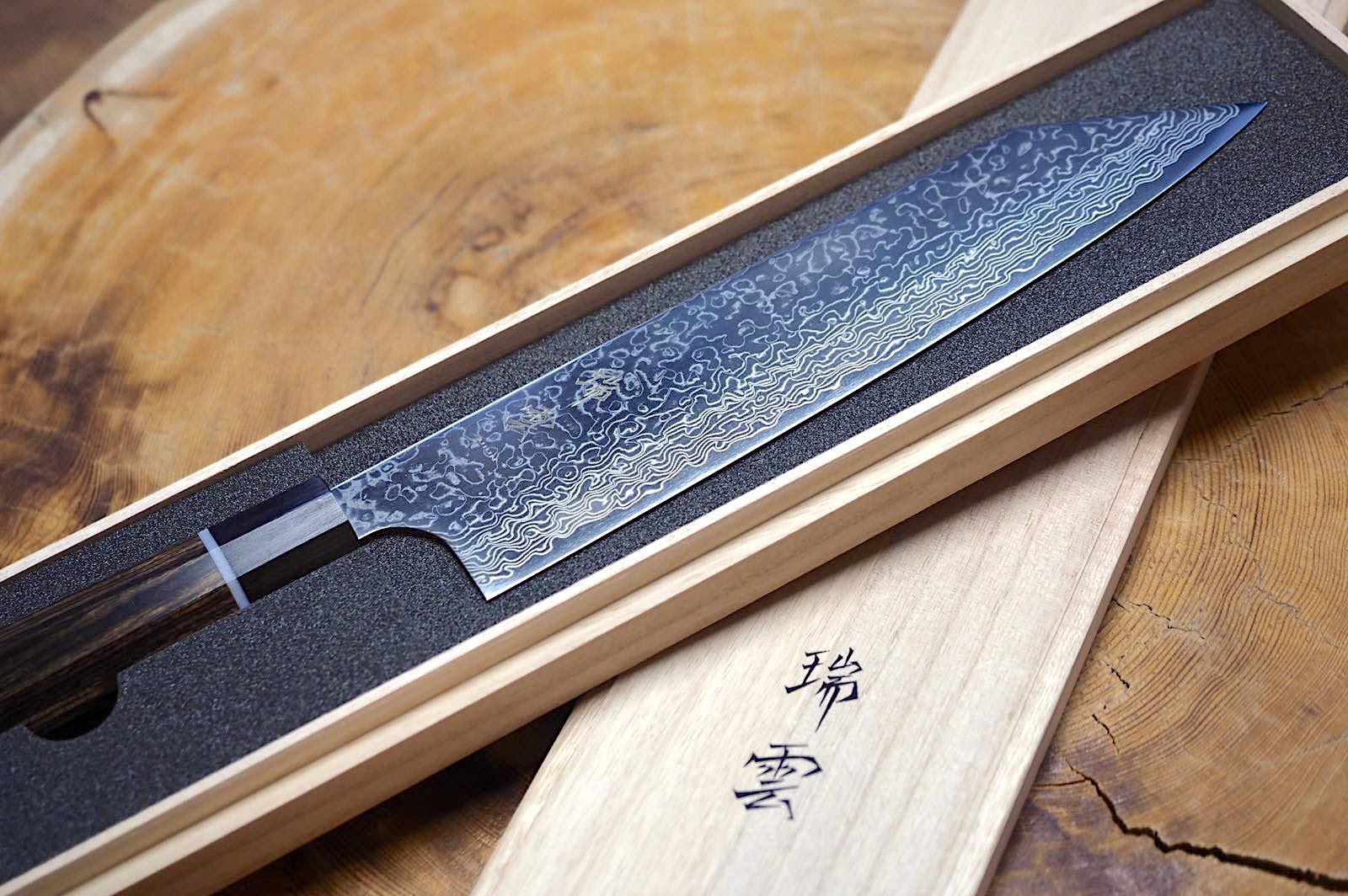Choosing a knife based on the handle or design is greta, but many people might also would like to learn more about the steel used in the blade.
- Carbon steel and alloy steel -
They are primarily used in Japanese knives. The types of steel are determined by their carbon content and it is said that the higher the carbon content, the harder the blade becomes. Generally, these steels are known for their sharpness and ease of sharpening. While they are prone to rust, careful maintenance can keep them in good condition. Here are some knives that feature this type of steel.
・Sakai Jikko "Aogami" Blue-2 Steel Santoku Knife with Green Plywood handle (16.5cm)

・Sakai Jikko "Betsuuchi" White-3 Steel Deba Fish Filleting Knife (15cm/18cm)

- Stainless steel -
When choosing a kitchen knife for home use, stainless steel often comes to mind first. It is highly resistant to rust and easier to maintain compared ro other types of steel. Additionally, it has the advantage of being less prone to damage in the tang. Here are some knives that feature this type of steel.
・Sakai Jikko "Gyuto" Chef's Knife VG10 Core and Damascus Steel with hammered finish (21cm/24cm)

・Sakai Jikko "Ginsan" Silver 3 Steel Kiritsuke (K-tip) Gyuto Chef's knife (20cm/23cm/26cm)

- Powdered steel (High speed steel)-
This steel is also known as high-speed steel (HSS), is a type of steel that remains hard even at high temperatures, though its structure tends to be coarse. Powdered HSS is produced through powder metallurgy, a process fundamentally different from traditional methods. While conventional HSS was not suitable for knives, the improved fine metal structure has made it popular due to its toughness, excellent wear resistance, and superior edge retention and sharpness. However, one drawback is that high hardness makes it more time-consuming to sharpen. Here are some knives that feature this type of steel.
・ Seki Kanetsugu - Zuiun Gyuto SG2 High Speed Powdered Steel Kiritsuke (K-tip) Gyuto 21cm (custom sheath included)

- Ceramic-
Ceramic knives are known for their sharpness and resistance to rust, which are key features of this material. Being non-metallic, they are very lightweight and ideal for light cutting tasks. However, they are also extremely prone to chipping and cannot be sharpened like other types of steel. If chipped or in need sharpening, they must be sent back to the manufacturer or sharpened with a specialized diamond sharpener.
We do not carry ceramic knives in our store.
In addition to the various types of steel, the choice of handle and design elements such as Damascus patterns, Kasumi, hammered finished (tuchime) and Kurouchi contribute to the certain of a wide range of knives. When you visit the store to look at knives, paying attention to these aspects can make the selection process even more enjoyable.
Thank you for reading to the end.
See you on the next story.


